15 Easy Home Garden Ideas You Can DIY Today
If you’re anything like me, you love the idea of having a beautiful garden but don’t want to spend a fortune or tons of time making it happen.
That’s why I put together these 15 easy home garden ideas that are perfect for beginners or anyone looking to add a little green to their space without the hassle.
Whether you’ve got a big backyard or just a small patio, there’s something here that’ll work for you.
Trust me, with a few simple touches, you can totally transform your outdoor area into a cozy, plant-filled retreat you’ll love coming home to.
1) Vertical garden walls for small spaces
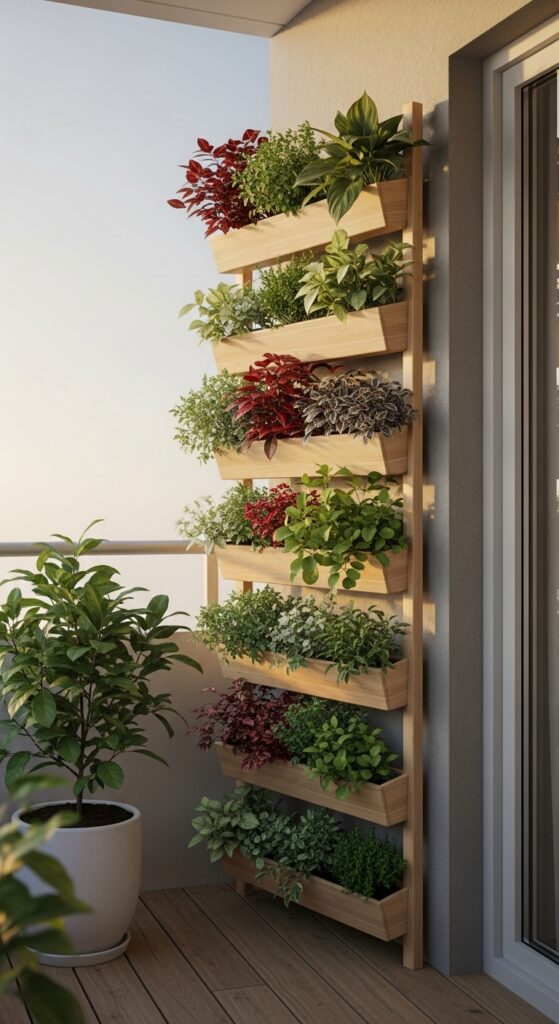
You can use vertical garden walls to grow plants without taking up floor space. These walls hold pots or planters mounted directly on your wall. This design works well for herbs, succulents, and small flowers.
Vertical gardens improve air quality and add greenery to tight spaces. You can customize your setup with shelves, trellises, or hanging containers. They fit perfectly in balconies, kitchens, or near windows where space is limited.
2) Raised garden beds with wooden frames
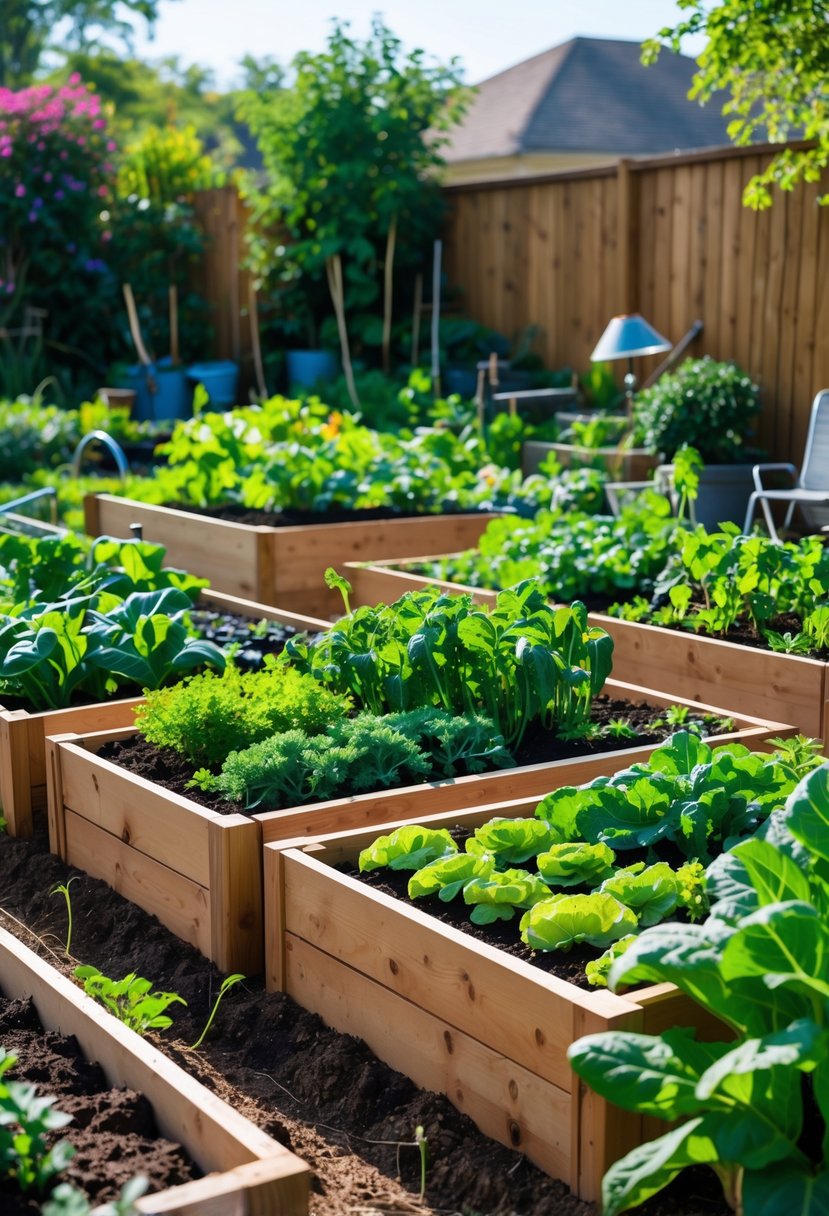
You can build raised garden beds using simple wooden frames. Wood is affordable and easy to work with, making it a popular choice for many gardeners.
These beds improve soil drainage and keep your plants organized. You can customize the size to fit your space and gardening needs.
Using untreated, rot-resistant wood like cedar increases durability. Raised beds also reduce weed growth and make planting and harvesting easier for you.
3) Container gardening using terracotta pots
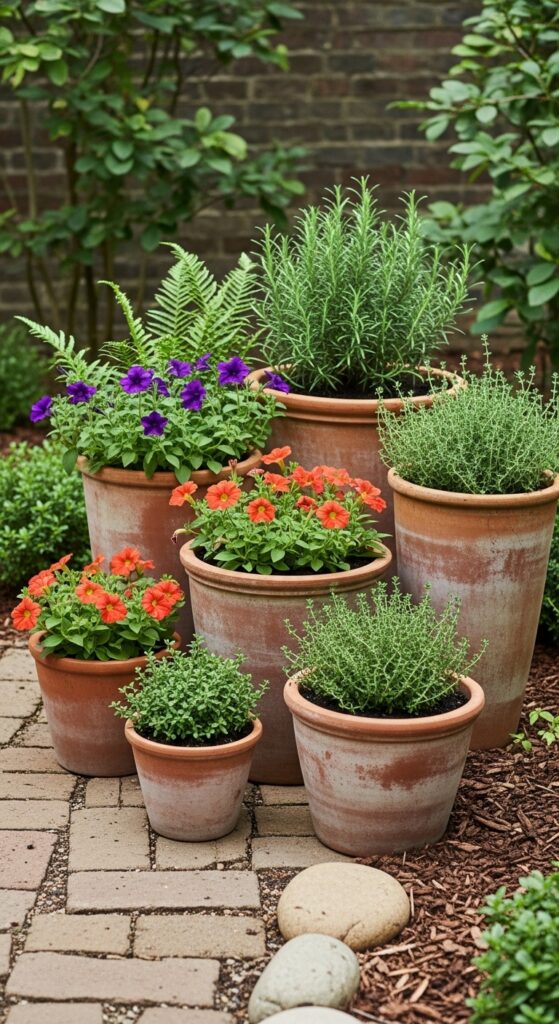
You can use terracotta pots for container gardening to grow a variety of plants in limited spaces. Their porous material helps regulate soil moisture and air flow, benefiting plant roots.
Terracotta pots come in different sizes, allowing you to arrange flowers, herbs, or small vegetables effectively. Place them on patios, balconies, or staircases to add greenery without needing a traditional garden bed.
4) Herb garden with basil, thyme, and rosemary
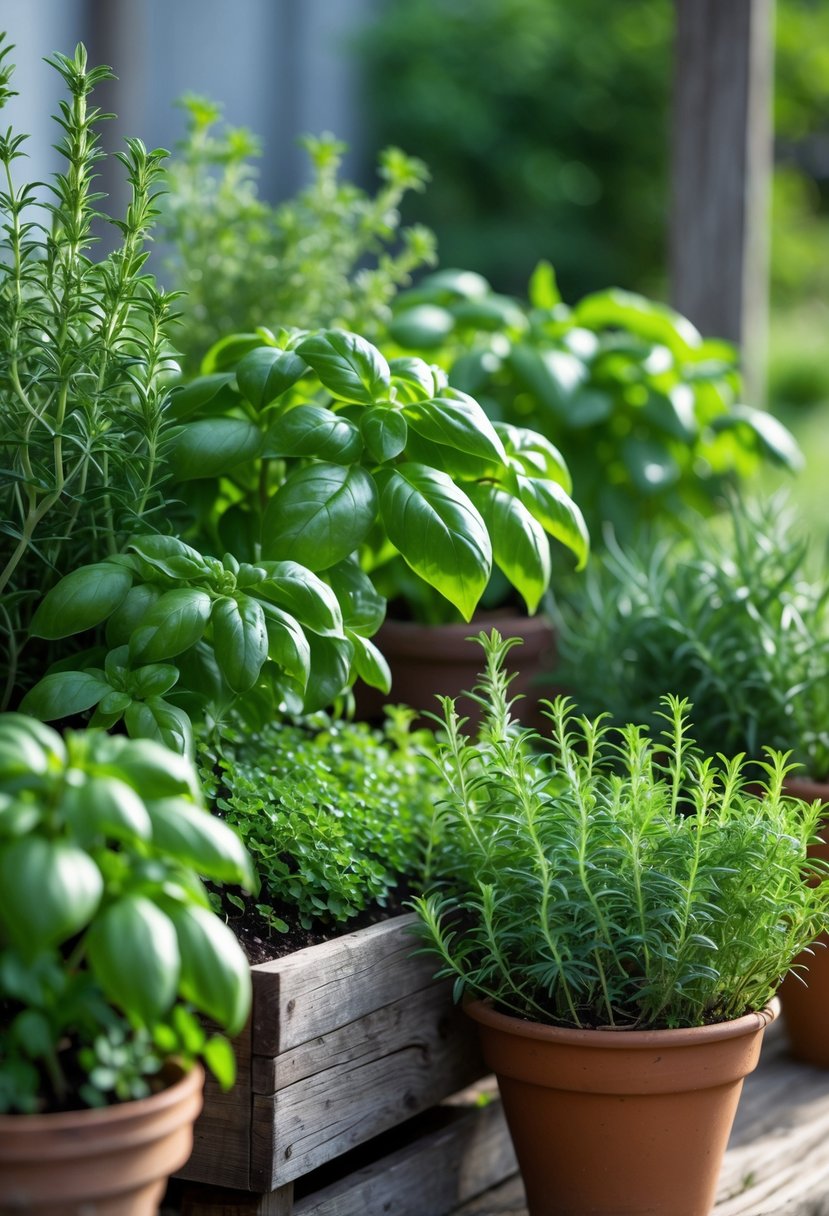
You can create an efficient herb garden by grouping basil, thyme, and rosemary together. These herbs share similar growing conditions, needing plenty of sunlight and well-drained soil.
This combination saves space and makes watering easier. Each of these herbs adds distinct flavors useful in many recipes, giving you fresh ingredients within reach.
5) Using colorful annual flowers for seasonal interest
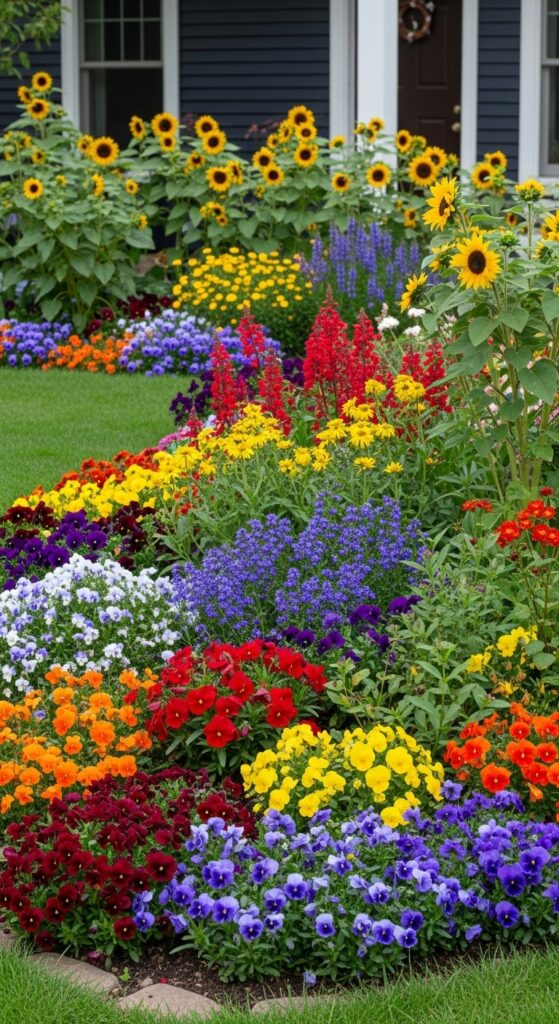
You can brighten your garden each season by planting colorful annual flowers. Annuals like petunias, marigolds, and zinnias offer vivid hues that refresh your garden’s look quickly.
Mixing different varieties adds texture and height, creating a dynamic display. Since annuals bloom for several months, they provide continuous color and seasonal variety without long-term commitment.
6) Incorporating a water feature like a birdbath
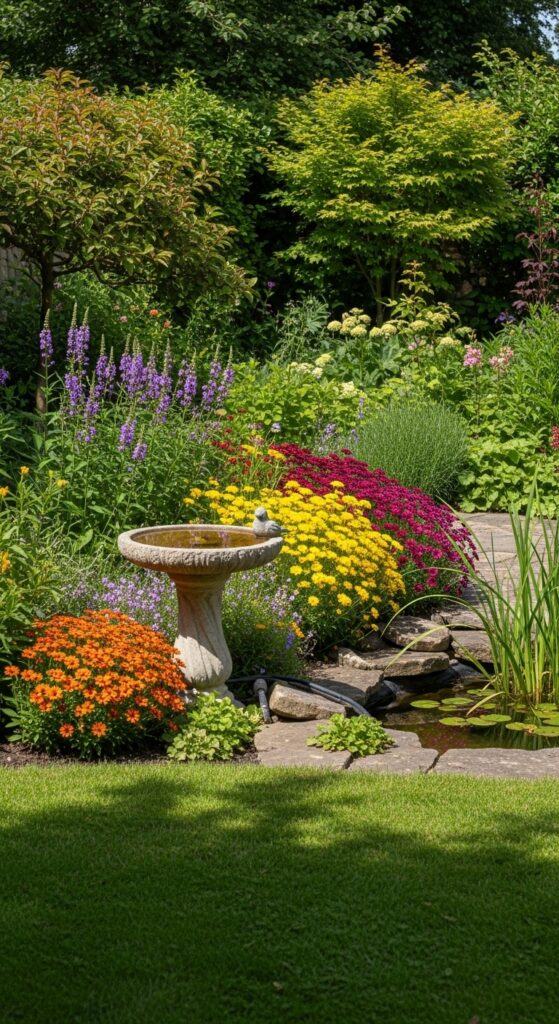
Adding a birdbath offers a reliable water source for local birds, enhancing your garden’s ecosystem. Place it near shrubs or trees to provide birds with cover and safety while they drink or bathe.
Choose a sunny spot to keep water fresh and visible from your home for easy birdwatching. A simple birdbath can increase wildlife activity and add a calm, natural element to your outdoor space.
7) Creating a shaded garden with ferns and hostas
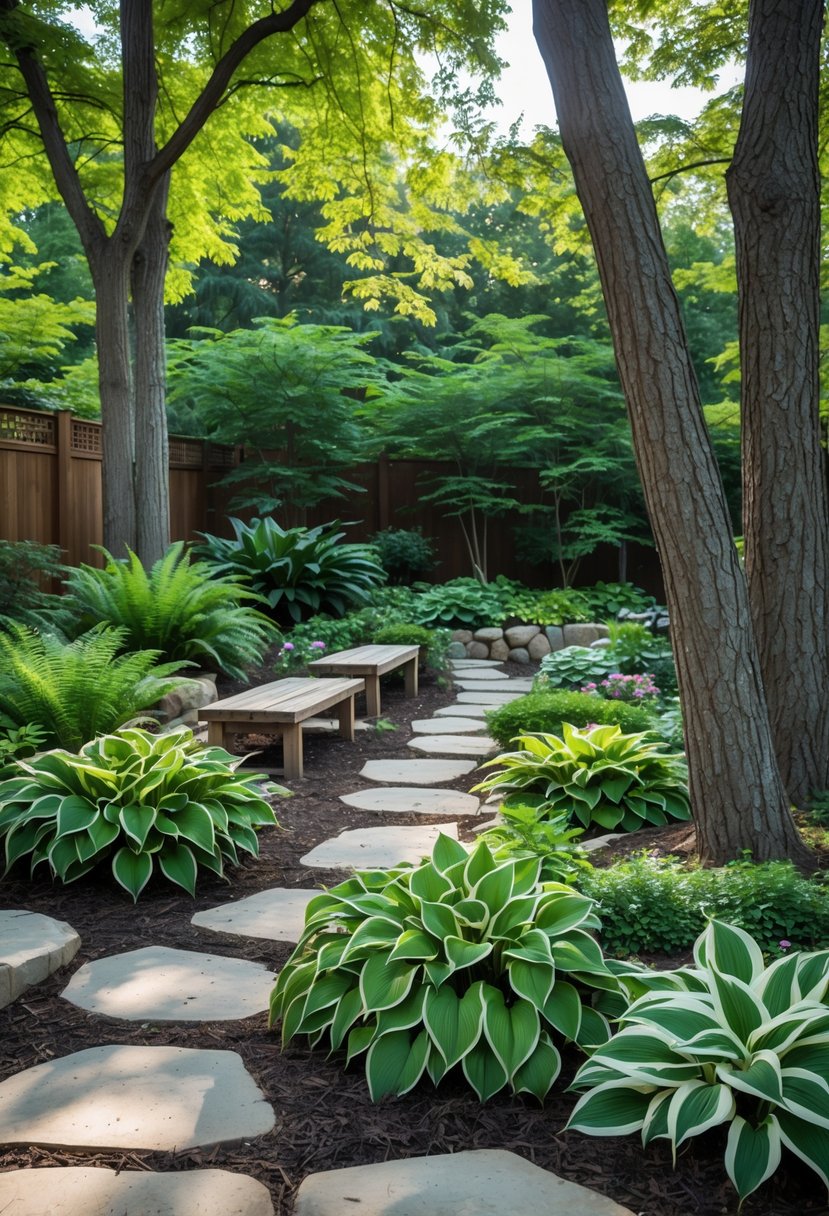
You can create a shaded garden using ferns and hostas, which thrive in low-light conditions. Their textured foliage adds depth and interest to dim areas.
Combine these plants with simple paths or garden art to enhance the space. This approach helps you make the most of shady spots without needing bright sunlight.
8) Mixing edible plants with ornamentals
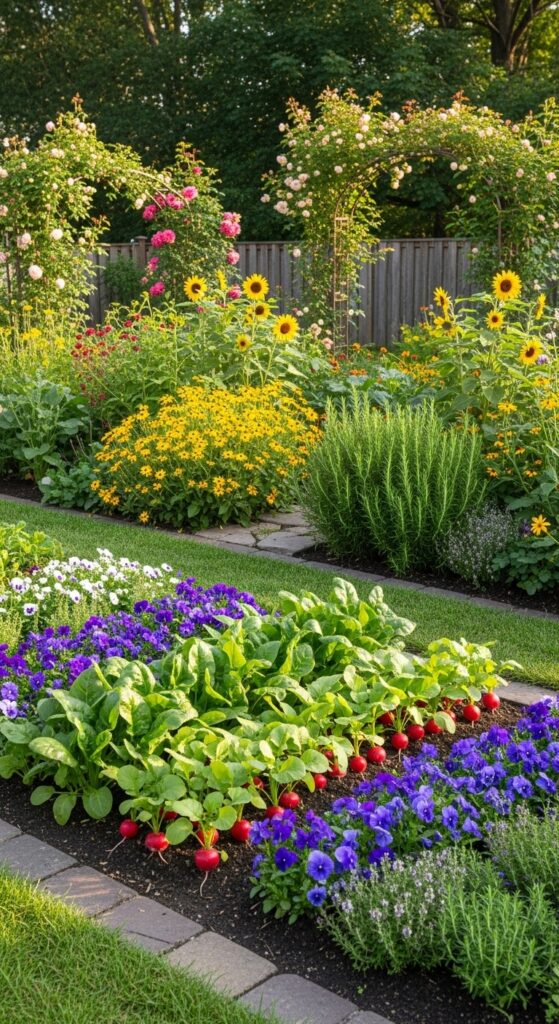
You can create an attractive and practical garden by combining edible plants with ornamentals. Group plants that share similar light, moisture, and soil needs to help them thrive together.
Mixing vegetables, herbs, and flowers adds color and texture to your garden year-round. It also helps deter pests naturally, reducing the need for chemicals.
Using containers is an easy way to manage these combinations, allowing you to control conditions more precisely. This approach makes your garden both beautiful and functional.
9) DIY pallet garden planters
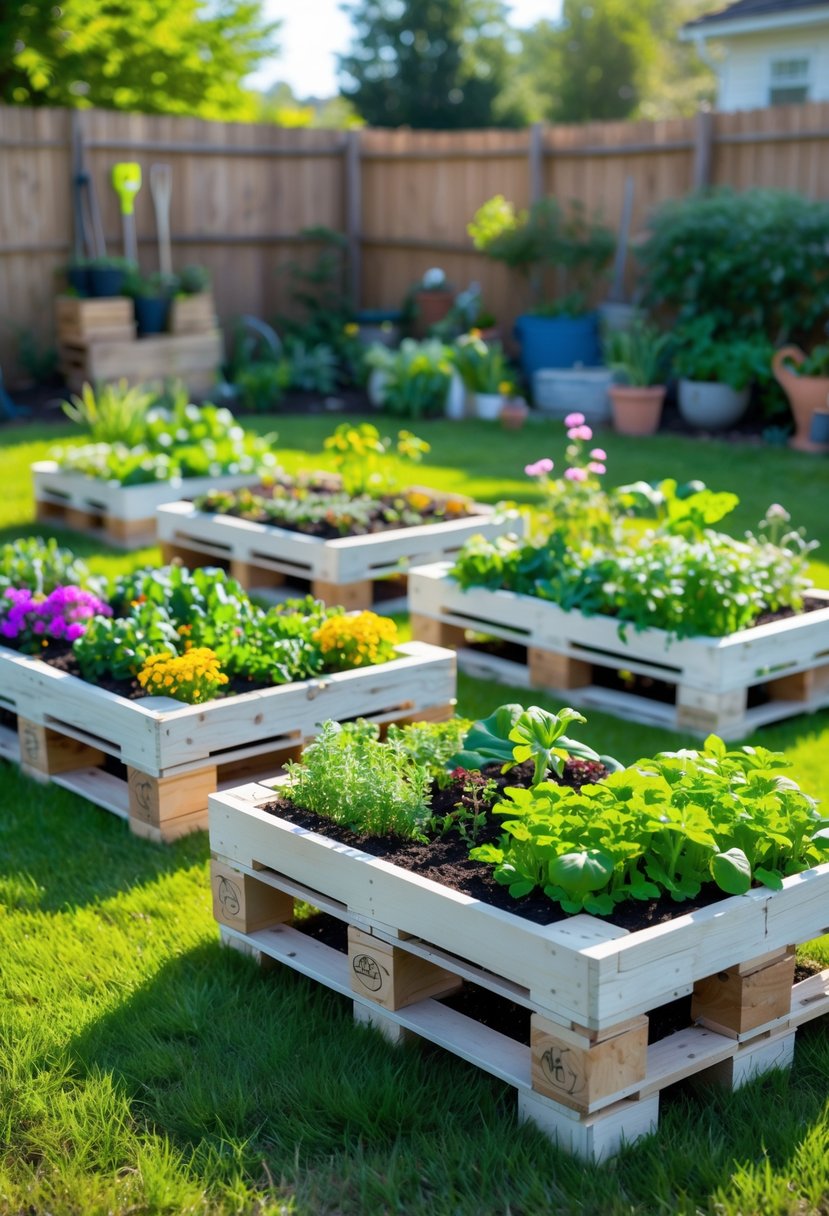
You can create garden planters using wooden pallets, which are affordable and often free. Pallets provide a sturdy base and a rustic look for your plants.
These planters fit well in small spaces or patios. You can build them vertically or horizontally, depending on your space and style.
With minimal tools and nails, you can customize the size and shape to suit your gardening needs. They offer a budget-friendly way to add greenery to your home.
10) Adding garden lighting with solar-powered LEDs
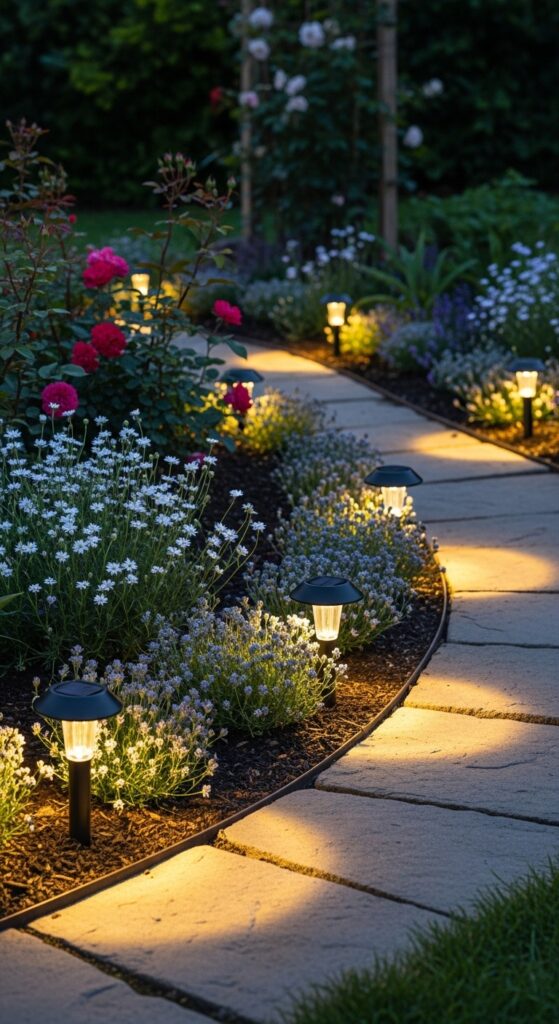
You can enhance your garden’s ambiance by installing solar-powered LED lights. These lights charge during the day and automatically illuminate your outdoor space at night without extra wiring.
Solar LED lights come in various styles, letting you highlight pathways, plants, or seating areas. They are energy-efficient and easy to install, making them practical for any garden.
11) Planting native wildflowers for pollinators
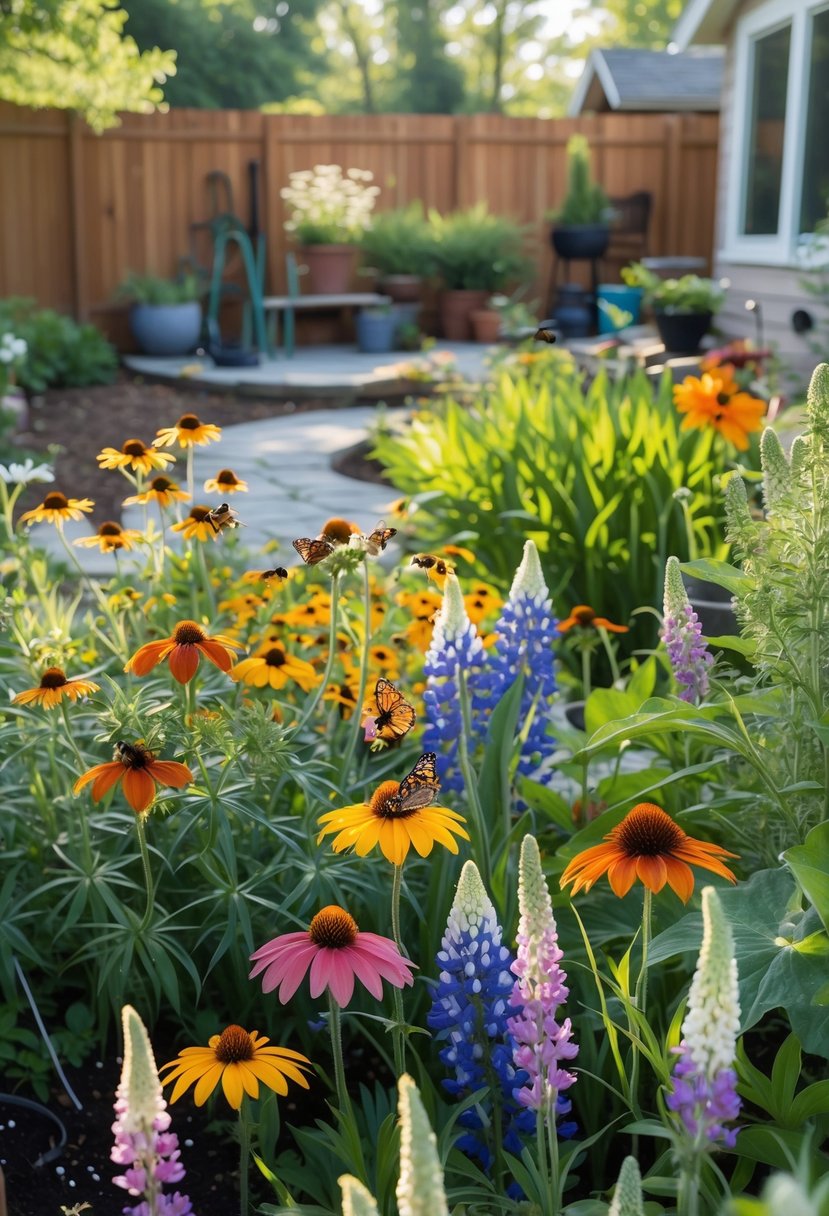
You can attract beneficial pollinators by planting native wildflowers in your garden. These plants provide essential nectar and pollen, supporting bees, butterflies, and other insects.
Native wildflowers are adapted to your local environment, making them easier to grow and maintain. They also help improve soil health and promote local biodiversity.
Including a variety of native species ensures blooms throughout the season, maintaining a steady food source for pollinators. This approach supports both your garden’s beauty and local ecosystems.
12) Designing a garden path with natural stone
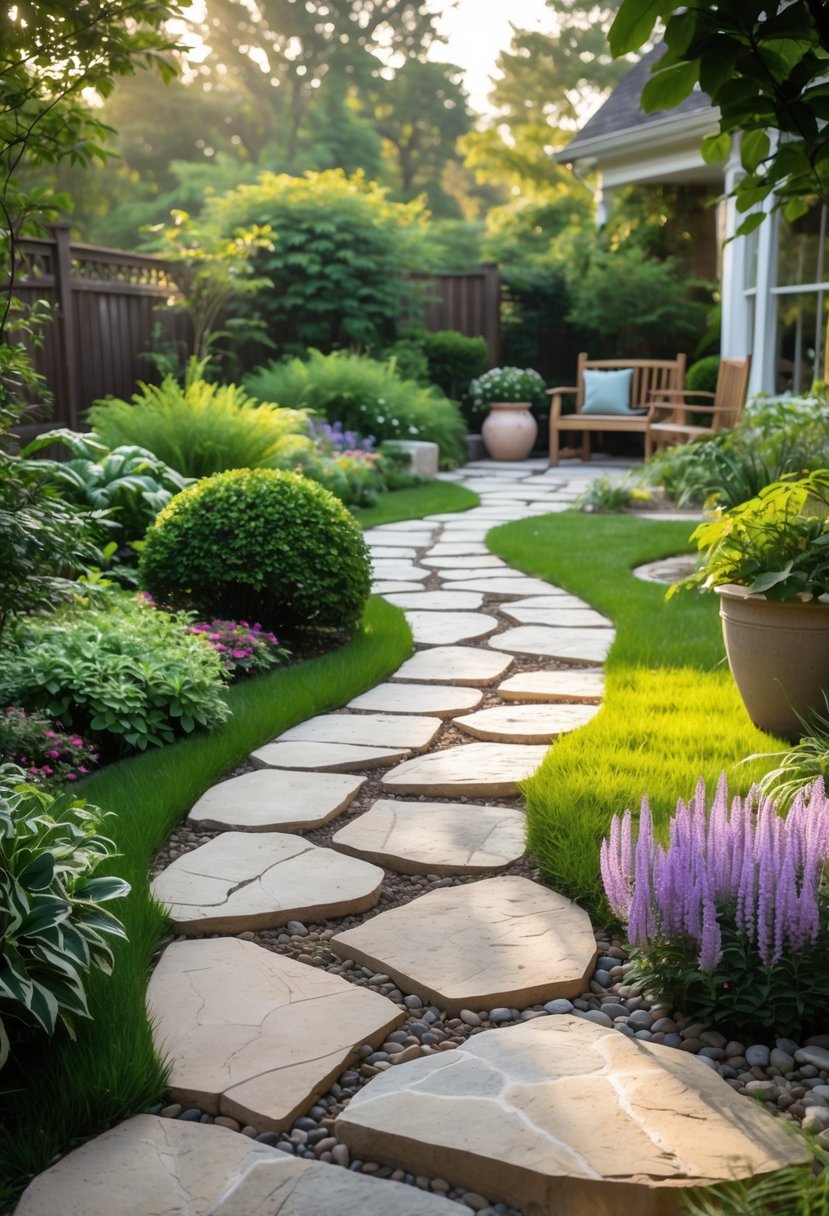
You can use natural stone to create a durable and attractive garden path. Choose stones that complement your garden’s style, whether smooth flagstones or rough river rocks.
Arrange the stones to follow a gentle curve or a straight line for easy navigation. Adding gravel between stones improves drainage and stability. Natural stone paths blend well with various plants and garden themes, enhancing both function and appearance.
13) Using mulch to conserve water and reduce weeds
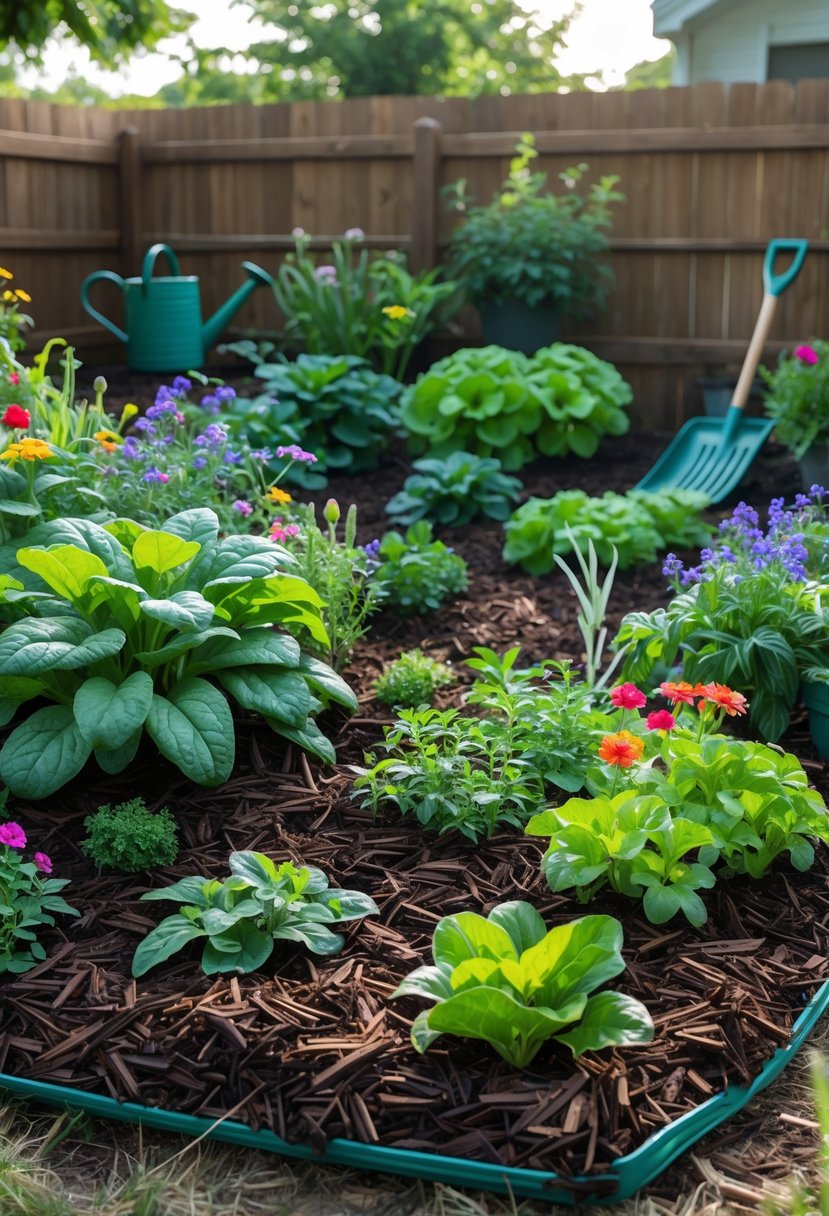
You can use mulch to help your garden retain moisture by blocking evaporation from the soil surface. This reduces the amount of water you need to apply, saving you time and resources.
Mulch also acts as a barrier against weeds, limiting their growth by reducing sunlight exposure. This means fewer weeds competing with your plants for nutrients.
Choose organic mulches like wood chips or straw, which also improve soil quality as they decompose. Make sure to apply mulch evenly and avoid piling it against plant stems.
14) Compact dwarf fruit trees for patios
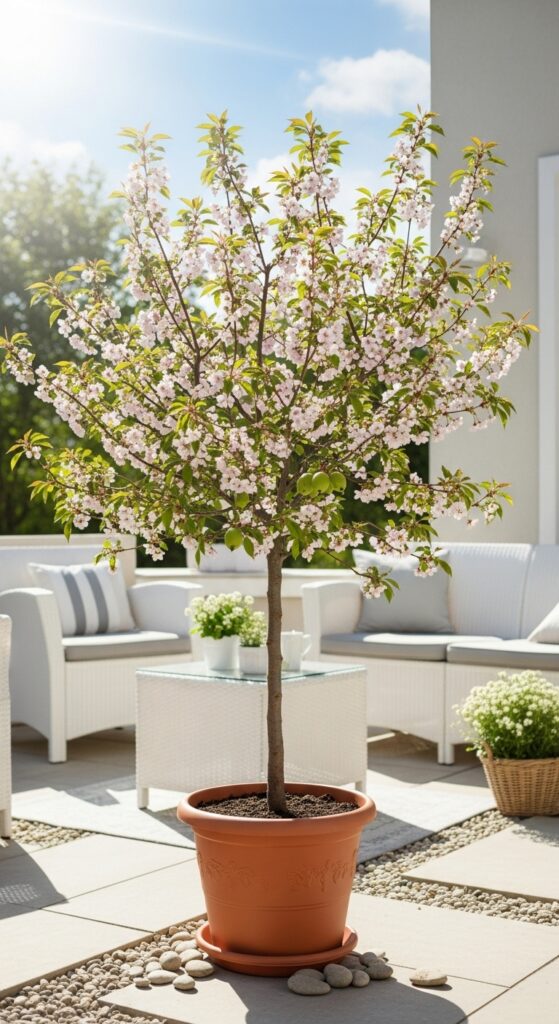
You can grow dwarf fruit trees on patios or in small garden spaces without needing much room. These trees are designed to stay small but still produce a good amount of fruit.
Dwarf varieties like nectarines or apples often yield enough fruit for your family’s needs. They also bring color and greenery to your outdoor area.
Proper care, such as regular watering and pruning, will keep your dwarf trees healthy and productive in limited space.
15) Building a butterfly garden with milkweed
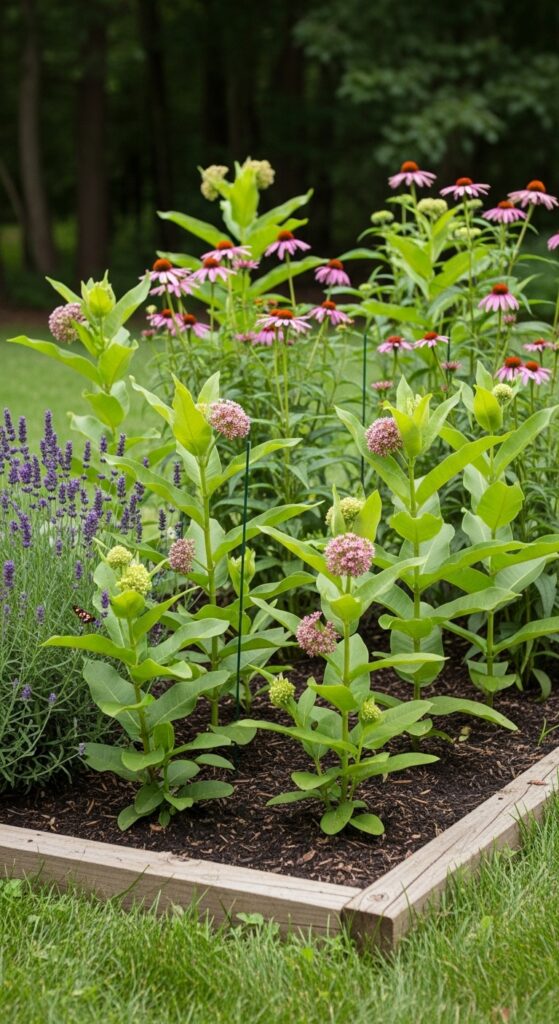
You can attract butterflies by planting milkweed, which is a key host plant for many species, including monarchs. Healthy milkweed supports their lifecycle and provides nectar.
To enhance your garden, include other nectar-rich flowers like coneflowers and black-eyed Susans. Avoid pesticides to maintain a safe environment for pollinators.
Keeping milkweed plants healthy is important. Pairing them with diverse companion plants ensures your garden stays vibrant and inviting to butterflies throughout the seasons.
- 20 Stylish Gray Living Room Ideas for a Modern Cozy Look - July 3, 2025
- 15 Easy Home Garden Ideas You Can DIY Today - July 2, 2025
- 15 Cozy Cottage Core Kitchen Ideas for Whimsical Charm - June 30, 2025







